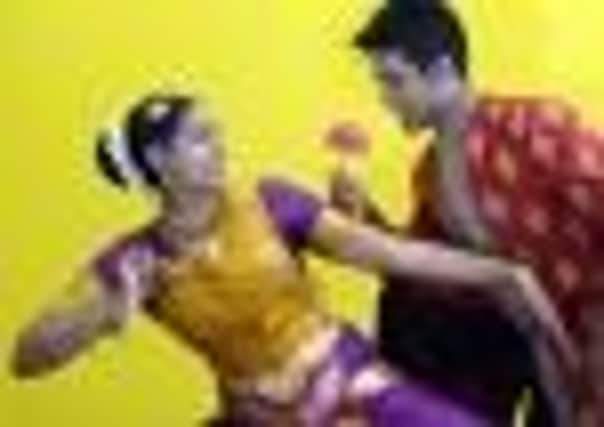Mela has gone from strength to strength


Then, a handful of stalls – some selling beer, chips and burgers – catered for only a few hundred visitors drawn mainly from the Capital’s Asian communities.
Only a fraction the size of similar events in the largest English cities, the Mela would also remain in the shadow of Capital-based counterparts the Fringe and the International Festival for the best part of a decade.
Advertisement
Hide AdBut it became an event with staying power and heart. In the 17 years since it came into being, as it has moved from Meadowbank to Ocean Terminal and then Pilrig Park, and it has grown steadily.
Organisers of this year’s Mela at Leith Links, the first to be led by new director Chris Purnell, expect to welcome up to 30,000 festival-goers who will enjoy a programme ranging from Japanese drummers and breakdancers to classic bhangra and pyrotechnic theatre. There will also be food and clothes stalls, events for children and a fashion show.
Co-founder Shaheen Unis, an Edinburgh resident for 40 years but originally from Lahore in Pakistan, has observed the event’s evolution.
“There’s such a variety there now,” she says. “When it started, it was very much the local community and we could only buy things like raw materials to make clothing.
“Now you see ready-made goods – jumpers, shoes, handbags, jewellery. And you see these huge stalls with people coming from far away to display things, from Birmingham, Bradford and Leicester.”
But it is the event’s diversification, as much as any growth in scale, that organisers and performers believe has been key to its success, particularly in a city with a swelling immigrant population.
Advertisement
Hide Ad“I was only five when I went to my first Mela,” says Breige Swift, now 22, the festival’s artist liaison coordinator. “I loved having the lamb samosas and the kulfi ice – a kind of Indian ice cream that comes in mango and pistachio.
“Back then, one of my friends in school – we were both in Leith Walk Primary – was in a bhangra band that performed in the festival, and they had Highland pipers playing with them.
Advertisement
Hide Ad“I remember the fusion aspect of it really struck me – the young guys were from India but they were mostly born in Scotland and their performance expressed that.
“It’s only as you get older that you realise how important the Mela is in terms of race relations.”
Pointing to initiatives such as Green Mela, which will see steps taken to reduce waste and increase recycling and composting, Breige is quick to stress the festival’s diversity goes beyond the ever-increasing range of ethnic and national groups involved in organising it.
“I’ve had friends who say they want to go to the Mela but they see it as exclusively for minorities,” she says. “In fact, it’s the opposite. It’s for all.”
That feeling is shared by Eugene Madiro, 18, from Harare in Zimbabwe, who lives in north Edinburgh and will perform at this year’s Mela with G-Code, a Capital-based group of rappers, singers and breakdancers.
At times put off by the hostility and detachment of the residents he encountered when he first arrived in Edinburgh three years ago, Eugene says the Mela expresses a growing sense of togetherness in the city.
Advertisement
Hide Ad“There was a time when I used to feel excluded,” he says. “I did not feel comfortable. In Zimbabwe you see people just talking to anyone but here it’s not like that. People are not that sociable. There were times when people used racist words to me as well.
“But the Mela helps bring everyone together. You entertain people and through that entertainment people will find something they can share.”
Advertisement
Hide AdHe adds: “As long as it’s all fun, it does not matter where you are from.”
n The Edinburgh Mela is at Leith Links from August 31 until September 2. A day pass costs £3, although entry is free for children aged 12 and under.